Removing sticker residue from glass, wood, walls, metal, or plastic surfaces around your home can be painful.
The problem is that kids love putting stickers on walls, wood furniture, glass, and stainless steel appliances. Likewise, many new appliances, windows, doors, mirrors, and furniture items come with stickers or labels you need to remove.
So, how do you remove sticker residue without damaging painted walls, metal stainless steel appliances, wood furniture, or everyday plastics like Tupperware?
Our expert cleaning service team shares all their sticker cleaning secrets in this guide.
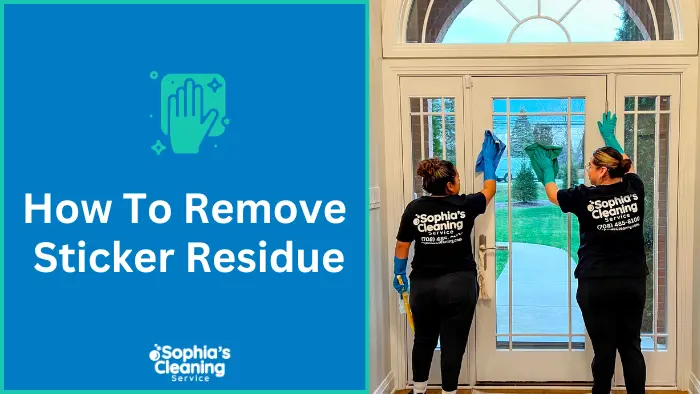
Also, should you use rubbing alcohol, acetone, a hair dryer, hot water, or dish soap instead? What about peanut butter, nail polish remover, white vinegar, or Goo Gone?
Luckily, our home cleaning experts have battle-tested the best ways to remove sticker residue and gunk from walls, wood, glass, and every imaginable household surface.
Read on to find out which household items work best to remove sticky residue from each surface type. Moreover, we share which products to avoid if you don’t want to ruin wood, glass, plastic, or wall paint finishes.
Sticker Residue Removal Cheat Sheet
First, let’s run through which solutions work best to remove sticker residue from the most common surfaces around your house.
Always test any adhesive remover or method on an inconspicuous area first. Especially when using harsher solvents like Goo Gone or nail polish remover.
Glass Surfaces
Soak the sticky residue with rubbing alcohol, Goo Gone, or vinegar and scrape it off with an old credit card or plastic scraper. A razor blade can also work wonders, but avoid scratching the glass. You can also use Dawn dish soap and warm water or a magic eraser to remove any remaining sticker glue residue from the glass.
Wood Surfaces
Lightly apply oil-based solutions like eucalyptus oil or a mild, oil-based commercial remover like Goo Gone. Avoid water-based products that can soak into and damage the wood. Do not over-scrub or leave the solution too long; it will eat through the wood finish.
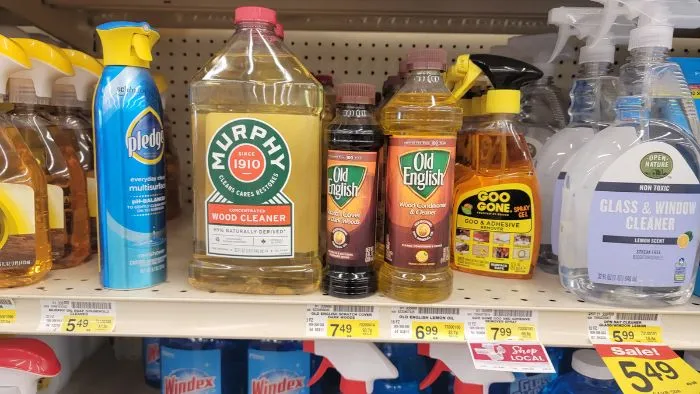
Plastic Surfaces
Gentle oils or rubbing alcohol are effective; avoid harsh chemicals like nail polish remover, which could damage the plastic. If you are careful, you can use Goo Gone on plastic. However, avoid Goof Off, which is much stronger than Goo Gone and will remove the plastic’s finish.
Painted Wall Surfaces
Apply gentle heat using warm, soapy water or a hair dryer. If needed, try a heat gun, but be careful because it’ll remove the paint. Extra care should be taken to prevent damage to painted or wallpapered walls, so test a small area first.
This is even more important if you remove stickers from a wall during a deeper move-in or move-out cleaning of your home. The last thing you want to do is to have to match touchup paint or repaint an entire wall because you removed the paint finish.
Step-By-Step Sticker Residue Removal Guides
We’ll provide a step-by-step guide for removing sticker residue from glass, wood, plastic, or wall surfaces. This will help you tackle stubborn residue confidently, leaving surfaces clean and sticker-free.
Okay, let’s ensure your DIY sticker removal project goes off without a hitch.
Removing Sticky Residue From Glass
Removing sticky residue and glue from glass can be tough. However, using a vinegar or rubbing alcohol solution combined with the steps below will make things much easier.
Here’s how to use alcohol or vinegar on glass surfaces to remove sticker glue residue while leaving a streak-free finish.
Step-By-Step Glass Sticker Removal Guide
- Set Up the Area: To remove debris or dirt, wash the glass surface with a moderate cleanser and water mixture like dish soap. Then, wipe dry using a lint-free cloth.
- Apply Alcohol or Vinegar: Soak a cotton ball or cloth in white vinegar or rubbing alcohol. Gently dab the sticky area to ensure it’s soaked completely.
- Let It Sit: Give the solution 3-5 minutes to settle. This aids in the adhesive’s breakdown in the solvent.
- Wipe off Residue: Wipe off the residue with a dry, clean cloth. You might need to reapply the solution to troublesome places and use a plastic scraper to remove the sticky substance carefully.
- Final Clean: For a streak-free shine, clean the glass once more after removing the residue with a glass cleaner or vinegar and warm water mix.
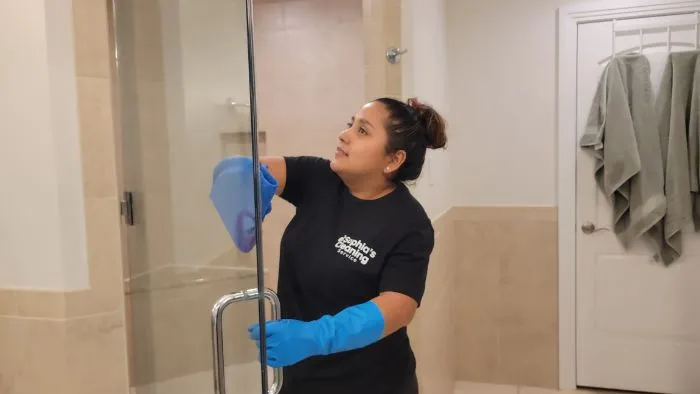
A final professional cleaning tip is to perform the sticky glue glass removal steps above as soon as possible. The longer you let the sticky glue set on the glass surface, the harder it’ll be to remove without scratching the glass.
Lastly, for safer removal, you can use a rubber eraser instead of a scraper or blade to rub off the sticky residue from glass after soaking it in the above solution.
How to Wipe Glass Surfaces Without Streaks?
The best way to wipe glass surfaces without streaks is to use a microfiber cloth after properly cleaning the entire surface beforehand with warm water.
No question, microfiber cloths capture moisture and debris without shedding fibers, making them ideal for glass surfaces, including glass jars.
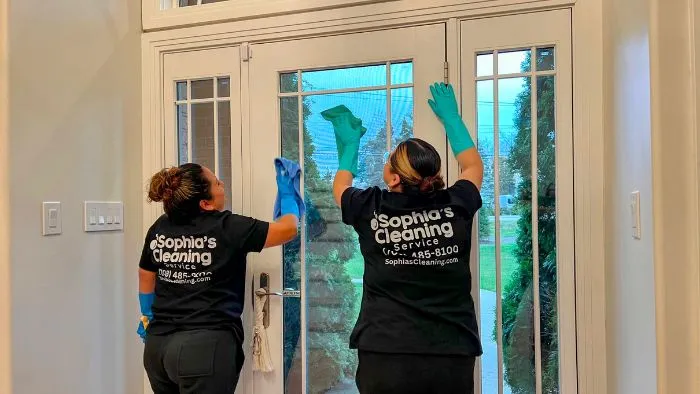
In addition, you should wipe the surface with the cloth in a circular motion to ensure thorough cleaning without streaks.
Finally, after cleaning, you can buff the glass surface with the dry portion of the microfiber cloth to enhance the shine and remove any lingering streaks.
Streak-Free Glass Surfaces Using Masking Tape
You can use masking tape to remove sticky residue from glass surfaces.
To do this, wrap your middle two fingers with masking tape, sticky-side out.
After that, pull away from the surface while pressing the taped side against it; the dry glue should adhere to the tape.
This process can be repeated until all the remaining residue is gone.
Removing Sticky Residue From Walls
Have you ever dealt with sticky residue from adhesive hooks or accidental spills on your walls?
Tackling sticky areas on wall surfaces is tricky, especially if you don’t want to damage the paint or wallpaper finish.
Here’s how to effectively remove those sticky areas without leaving a trace. Don’t forget that you can always hire an affordable cleaning service nearby to do the job instead. Easy peasy lemon squeezy!
Test a Small Spot on Your Walls
Start your spot test by selecting a small, discrete area to ensure the solution or technique you use doesn’t harm the wall. It could be on the wall or even on your baseboards.
However, clean the baseboard or wall area with a light cleaning solution before testing so that the chemicals don’t react to any current residue on the surface.
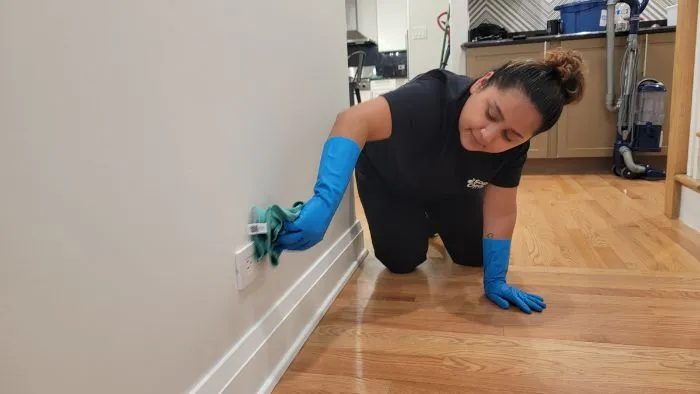
Scrub the wall surface with a soft-bristle brush, dish soap, and warm water to loosen the glue or sticky residue. Repeat 2-3 cycles of this gentle approach to see if the stickiness comes off the test spot on your wall.
Before proceeding to larger sections, confirm no discolorations, paint flaking, or texture changes.
Advice for Using Heat or Detergents
It’s essential to exercise caution and follow guidelines when using heat or detergent to clean wall coverings. Here is a quick guide on using heat or detergent to remove sticker residue from wall surfaces.
- Use a Hair Dryer: A hairdryer can soften the adhesive residue. Hold the dryer a few inches away from the sticky area for approximately thirty seconds. Then, carefully peel or scrape the softened adhesive away.
- Detergents: Add a tiny bit of detergent to warm water. Clean the area with a gentle cloth. A baking soda and water solution can be a mild abrasive for tough residues.
How Can You Clean Different Types of Walls?
Cleaning different types of wall coverings is a real hassle, as each surface requires special treatment. Let’s explore the exact techniques for effectively cleaning different wall coverings.
- Painted Walls: Avoid using abrasive cleansers on painted walls. Use milder cleaners, such as a vinegar solution or soapy water. Try a damp Mr. Clean Magic Eraser to rub off some residue gently.
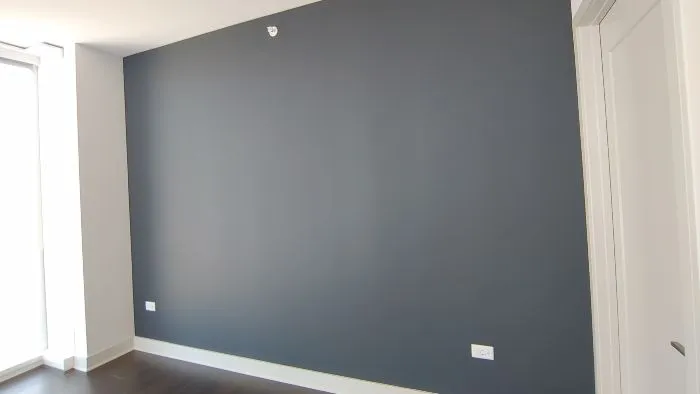
-
Wallpaper: To prevent the wallpaper from peeling, use water and clean the products carefully. Don’t overwet, and wipe the surface circularly rather than using too much elbow grease with materials like paper towels.
-
Textured Walls: Sticky residue may be gently scrubbed out of textured walls using a soft-bristle brush or sponge. Use a toothbrush with warm water and dish soap for finer-grit wall textures.
-
Vinyl Wall Coverings: Gently scrub a mild detergent solution and wipe it with a microfiber cloth or sponge. Avoid using abrasive cleaners so that they do not cause any scratches to the surface of the vinyl wall covering.
Removing Adhesive from Wood
Removing adhesive from wooden hard surfaces requires careful treatment to prevent finish damage.
Here’s a step-by-step guide to effectively removing adhesive from wood while preserving the finish of your wooden surfaces.
Testing Removal Products on Wood
Before applying any product to a visible area, testing it in an inconspicuous spot is crucial.
Begin by selecting an inconspicuous area that is not immediately noticeable, ensuring that any potential damage is limited to a select spot.
Once you’ve identified the test spot, apply a small amount of the adhesive remover using a cotton swab or a soft cloth. Allow the product to sit for a few minutes as you observe any potential reactions.
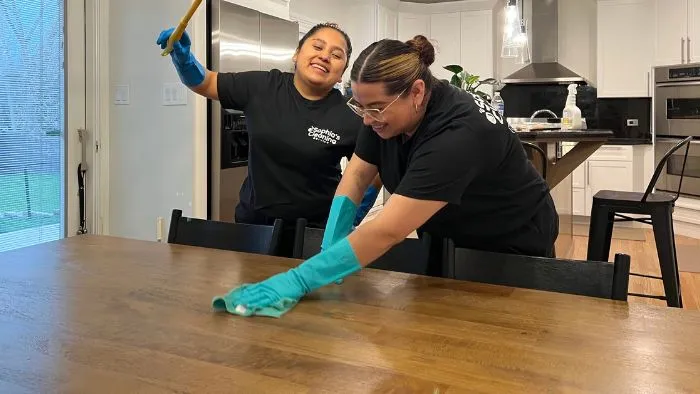
Afterward, gently wipe away the remover with a clean rag to assess whether any damage has occurred, such as discoloration or surface alteration.
This cautious approach helps you gauge the product’s effectiveness while minimizing the risk of unintended harm to your wood surface.
What are the Best Practices for Application and Removal?
When it comes to application and removal, it’s best to start with gentle solutions like a mild soap mixture or canola oil before moving on to stronger alternatives.
Avoid harsh abrasives such as steel wool, opting for a soft cloth or sponge to scrub the affected area gently.
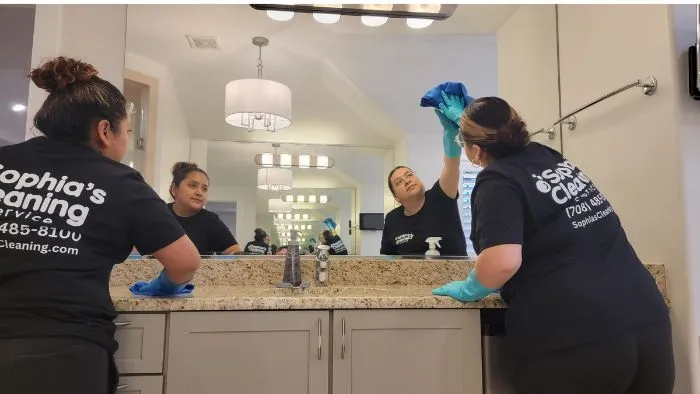
After removing the adhesive, rinse the surface with a damp cloth to prevent water damage, then promptly dry it to maintain the integrity of the wood.
These practices ensure effective removal while safeguarding the wood surface from harm.
Removing Sticker Residue From Metal
Stainless steel appliances, metal water bottles, and kitchen utensils like pots and pans often have stickers when you buy them.
As annoying as removing sticker residue from metal surfaces is, a few professional cleaning tips can simplify the process.
WD-40 to Remove Metal Stickers
One of our favorite everyday household items for removing stickers from metal is WD-40. This common household lubricant can be sprayed onto metal surfaces to remove many glue adhesives easily.
Here’s the step-by-step process for using WD-40 to remove sticker residue from stainless steel or metal.
1. Peel off as much of the original sticker from the metal surface as you can without scratching the surface. The easiest way is to start at the widest edge and roll the sticker tightly, almost like you’re making a burrito.
You can also use a credit card or plastic scraper tool to help peel off the sticker layer by layer. The goal is to leave as little residue as possible.
2. Next, spray the sticker area directly with WD-40 and let it soak for a few minutes.
Heat the surface with a hairdryer or heat gun on the lowest or medium setting for extra stubborn sticky residue on metal. This will loosen the glue from the stainless steel metal, allowing the WD-40 to finish the job better.
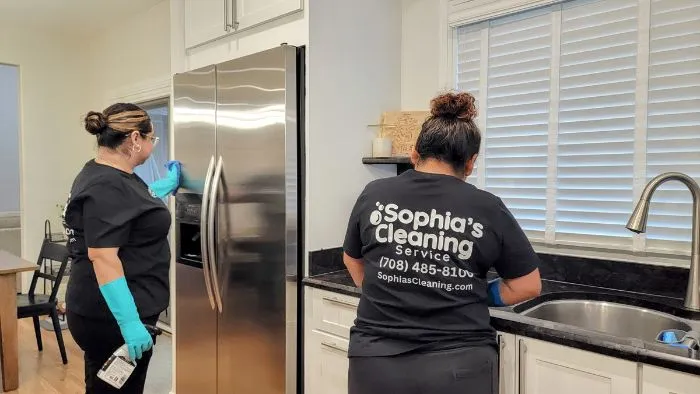
3. Carefully scrape the sticker from the metal surface using a plastic scraping tool or credit card until all the residue is removed. You can repeat the heating and WD-40 process multiple times as needed.
4. Afterward, wipe the metal surface clean with a microfiber cloth. You can also use a sponge and a mild detergent, such as warm water and dish soap, to remove any remaining sticker residue from the stainless steel.
5. After you are done, dry the area completely. The dry end of your microfiber cloth can buff the area for a spotless, clean metal surface finish.
Use Vegetable Oil to Remove Sticky Glue From Metal
To remove sticker residue from stainless steel or metal surfaces, follow the same steps above, but soak the sticker with vegetable oil for a few hours instead of a few minutes.
Oil will take more time to penetrate the glue residue than WD-40, but it can work just as well, if not better, for certain adhesives.
Different types of oils can also work, including baby oil, olive oil, or peanut butter. Indeed, these oils all contain compounds that break down sticker adhesives without harming the metal surface.
Sticker Removal from Plastic Surfaces
When removing stickers from plastic surfaces, handling the process delicately is essential, as certain substances can make surfaces sensitive. Following the proper techniques is key to avoid damaging the plastic or leaving behind an unsightly residue.
Here is how you can effectively clean stickers from plastic surfaces without causing any harm.
Removing Stickers Safely with Oil
First, pick the right kind to safely remove stickers using oil, such as baby oil, olive oil, coconut oil, or vegetable oil, which can all dissolve the glue.
Apply the oil to the sticker glue and let it sit for five to ten minutes.
Then, use a cloth to wipe away the softened adhesive. Repeat this process if needed until the sticker is completely removed.
Sticky Glue Removal Without Leaving Marks
To ensure complete removal without leaving any marks, use plastic scrapers to remove the stubborn residue delicately. Indeed, a plastic scraper or an old credit card can lift the adhesive without damaging the surface.
Afterward, conduct a final clean-up by wiping the area with a gentle cloth to remove any lingering greasy residue, especially after washing the area with soapy water.
This meticulous approach guarantees a spotless surface without any unsightly marks.
Why Removing Sticker Residue Can Be Challenging
Taking off sticker or decal residue can be challenging since many different adhesives exist. In practice, different adhesives react differently to different removal techniques.
Consider the following points when safely removing sticker adhesive or residue from wood, plastic, or glass surfaces.
Different Adhesive Types
Removing sticker residue is challenging because different types of adhesives react differently to removal methods.
For example, rubber-based adhesives in removable labels respond well to oil-based removers.
Conversely, acrylic adhesives, common in permanent stickers, require acetone or alcohol-based solvents for effective removal.
Surface Materials React Differently
The choice of porous or non-porous surfaces influences the removal techniques.
Non-porous materials like glass absorb cleansers differently than porous materials like wood.
Moreover, it’s essential to consider the sensitivity of the surface finish. Accordingly, delicate finishes like lacquered wood require gentler techniques to prevent damage.
Time and Environmental Conditions
The longer a sticker remains on a surface, the more the adhesive can form a stronger bond. Additionally, exposure to heat or sunlight can further solidify the adhesive, making removal even more difficult.
By understanding the interplay between adhesive types, surface materials, time, and environmental conditions, you can implement appropriate removal strategies to achieve optimal results without compromising the integrity of the surface.
More Sticker Removal Tips and Tricks
To minimize residue from stickers, check out these simple tricks to keep your surface fresh and tidy.
- Warm the sticker with a hairdryer to weaken the adhesive and lessen residue before peeling it off.
- Begin peeling the sticker at a corner, slowly and steadily pulling it back at a shallow angle.
- Once the sticker is removed, clean the surface with a mild detergent solution to remove any remaining adhesive or residue.
Recommended Stickers and Adhesive Products
We’ve got some handy suggestions to help you remove sticker residues from surfaces, almost like magic.
First, avoid using stickers that contain super glue.
Instead, seek out stickers with the words “easy-peel” or “removable” printed on them. These are made to leave the least residue and not create a sticky surface.
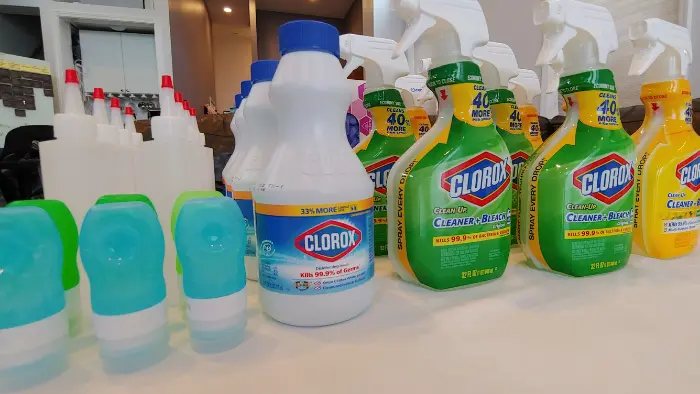
You can also use alcohol or Goo Gone to remove any remaining adhesive from the surfaces. Even hand sanitizer can work as a last-minute stand-in in case you don’t have any rubbing alcohol or Goo Gone available.
Here are a few unconventional yet effective methods sourced from social media and forums.
Using a Hairdryer or Cooking Oil
One method involves using a hairdryer to warm the sticker, making the glue softer and easier to remove. Apply heat to the sticker, then gently peel it off.
Alternatively, you can try using cooking oil to remove sticker residue. Drizzle a small amount of cooking oil onto the residue and allow it to soak in for a few minutes.
Then, gently wipe away the residue with a towel. The oil helps to break down the adhesive, making it easier to clean off.
Handling Large or Stubborn Residue
For more significant residues that are harder to remove, saturate the area with your chosen remover. Allow the remover to sit on the residue for an extended period, which helps to dissolve the adhesive and make it easier to lift off.
In cases where the residue is particularly stubborn or large, you can use a razor blade or a plastic knife easily found on Amazon. Carefully position the blade or knife at a shallow angle and gently scrape the residue off the surface.
This method best suits glass or metal surfaces, as it may scratch or damage other materials.
Finally, you can also try Goof Off, but be careful not to remove paint or finishes from your cleaning surface.
Sticker Residue Cleaning FAQs
Over the past four decades, we have cleaned thousands of homes and office spaces in Chicagoland, so we know a thing or two about tough cleaning jobs. Our experts have earned hundreds of 5-star reviews by doing what they do best: cleaning homes at the highest level of quality possible.
The following are the most frequently asked questions our teams of professional house and office cleaners receive from homeowners and property managers regarding sticker removal.
What natural products work best for stubborn sticker residue?
Baking soda or cooking oil are natural ways to remove sticky residue. Let the water, baking soda, or cooking oil solution rest on the residue for ten minutes to aid the adhesive breakdown.
How do I remove sticker residue from delicate surfaces like silk or Suede?
Avoid strong chemicals when working with delicate textiles like suede or silk. For information on caring for certain fabrics, seek expert cleaning advice or consult a reliable fabric care guide.
Can I use WD-40 on all surfaces for sticker removal?
WD-40 is a petroleum-based lubricant that can remove sticky residue from certain surfaces, such as wood, plastic, glass, and ceramics.
However, WD-40 may leave stains on paper, clothing, furniture, and painted walls, so avoid using it on these surfaces. However, WD-40 works wonders to remove sticky residue from stainless steel or metal surfaces like new appliances and kitchen accessories.
Peel off as much as you can a soak the sticker with WD-40 for a few minutes before using a plastic scraper or credit card to remove excess residue. Buff clean with a microfiber cloth and your metal will look brand new and “sticker-less” in no time.
How to remove sticker residue from clothing?
Avoid strong chemicals when working with delicate textiles like suede or silk. For information on how to care for certain fabrics, check the cleaning safety tag on most clothing items.
You can also look up the specific product or material online or contact the seller or manufacturer directly. That way, you’ll get the best instruction on properly removing the sticky residue from clothing.
How do you get sticky residue off painted walls?
First, try using warm, soapy water on painted walls. If that doesn’t work, more stubborn residue can be removed using a simple vinegar solution, like white vinegar and water.
Never forget to test any cleaning product in a discrete location before using it on the entire surface. Also, use warm rather than cold water in any cleaning mixture for a better scrub.
Can hand sanitizer remove sticker residue?
Hand sanitizer can effectively remove sticker residue from wood, plastic, or glass surfaces. Because hand sanitizer contains alcohol, it breaks down and dissolves adhesives and residue. It is less corrosive than Goo Gone and safer for your skin.
Conversely, certain sanitizer sprays or gels may discolor surfaces depending on their additives and fragrances. Nonetheless, always test on a smaller area before using them to clean sticky residue from any surface.
How to avoid damaging painted walls when removing stickers?
First, test a mild solution like warm, soapy water or white vinegar on a smaller area.
After confirming it’s safe, apply the solution to the residue and gently press down with a soft, dry cloth. But avoid aggressive chemicals, rough cleaning, or intense heat that can harm paint.
Can you use Goo Gone on painted walls?
Yes, you may use Goo Gone on painted walls, but be sure it doesn’t harm the paint by testing it first in a small, discrete, affected area. After sparingly applying it, use a clean towel to wash it off gently.
What’s the Difference Between Goof Off and Goo Gone?
Don’t mistake Goo Gone for Goof Off. Goo Gone is a much milder solution than Goof Off.
Goof Off is a heavy-duty cleaner containing acetone, the main ingredient in nail polish remover. Acetone can be dangerous to the skin, eyes, and lungs if it is inhaled. Accordingly, it should only be used if necessary in combination with gloves and eye protection.
Remember that Goof Off can remove paint from walls and finish off plastic if used incorrectly. Scrubbing too hard with this product will ruin wood and even discolor stone or brick. In most cases, you can use Goof Off on glass, but test it on an inconspicuous area first.
How do you remove adhesive from drywall?
To remove adhesive from drywall, apply heat using a hairdryer or heat gun, then gently scrape off the softened adhesive with a putty knife. Wipe away any residue with a damp cloth, and if necessary, use a mild adhesive remover following the product’s instructions for best results.
For even more house cleaning and sticker residue tips and tricks, contact Sophia’s Cleaning Service’s trusted team today to learn more.
About Sophia’s Cleaning
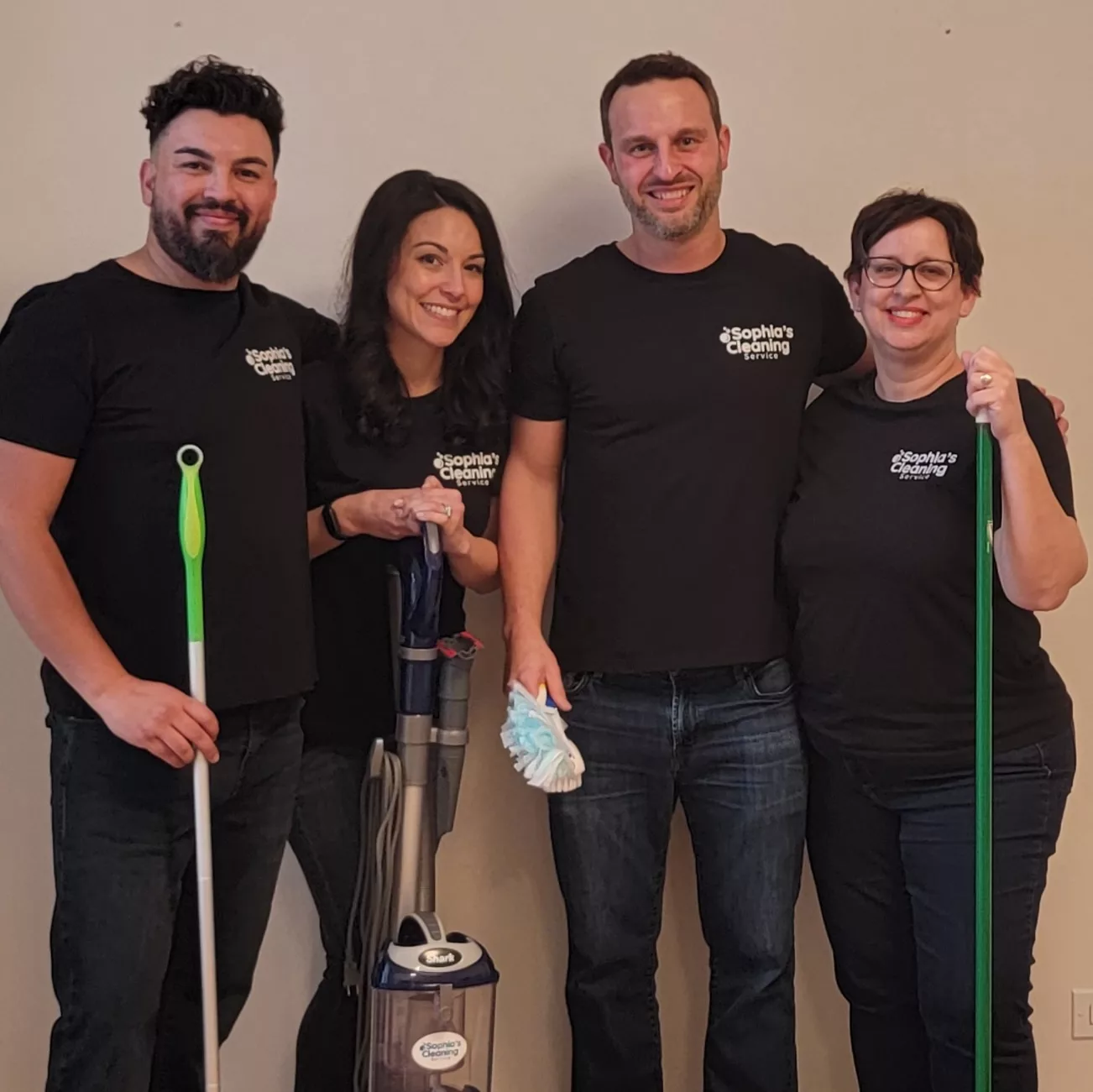
Sophia’s Cleaning Service is a fully licensed, bonded, and insured cleaning service located in La Grange, IL. Our professional maids have cleaned residential homes and commercial offices in Chicago’s Western suburbs for over 39 years. Meet the owners of Sophia’s Cleaning Service on Youtube.
Our Cleaning Service Areas
Sophia’s Cleaning is a local and family-owned cleaning company located in La Grange, Illinois. Our professional office and house cleaning teams service all western Chicago suburbs including:
- La Grange, IL
- Oak Park, IL
- Burr Ridge, IL
- Brookfield, IL
- Willowbrook, IL
- Hinsdale, IL
- Westchester, IL
- Riverside, IL
- Oak Brook, IL
- Clarendon Hills, IL
- Downers Grove, IL
- Westmont, IL
- Berwyn, IL
- Western Springs, IL
- and All Nearby Suburbs
- Melrose Park, IL
- Countryside, IL
- River Forest, IL
- Cicero, IL
- Maywood, IL
- La Grange Highlands, IL
- Lyons, IL
- McCook, IL
- Stickney, IL
- La Grange Park, IL
- Broadview, IL
- Hodgkins, IL
- Bridgeview, IL
- Palos Hills, IL
- Forest Park, IL
- Indian Head Park, IL
- Hillside, IL
- Summit, IL
- Willow Springs, IL
- Oak Brook Terrace, IL
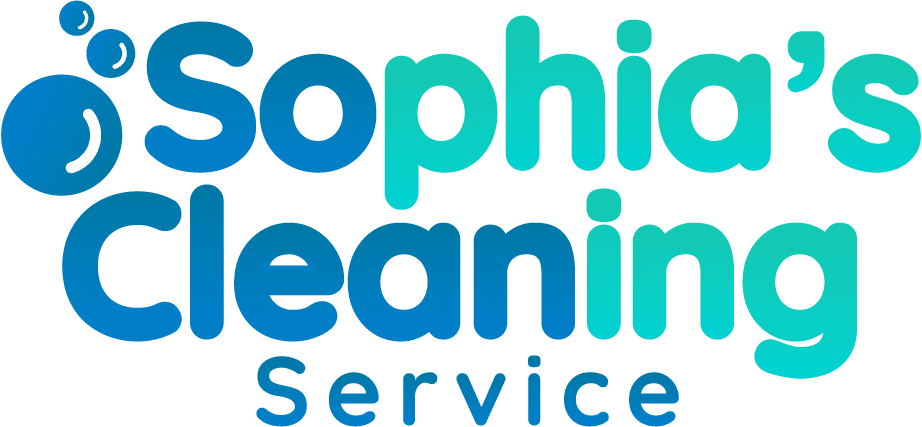
 (708) 485-8100
(708) 485-8100




